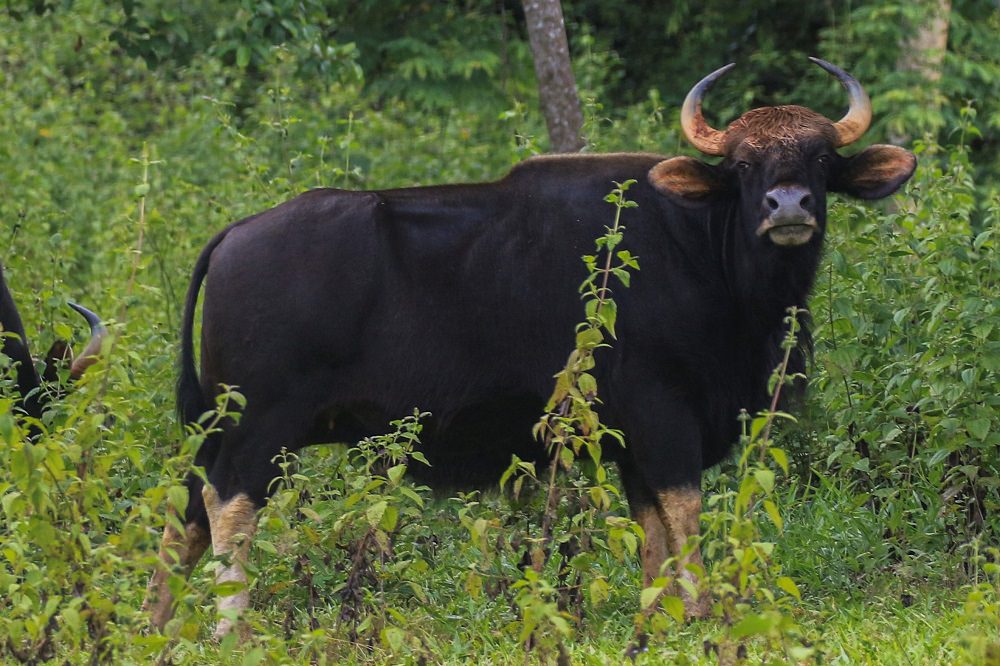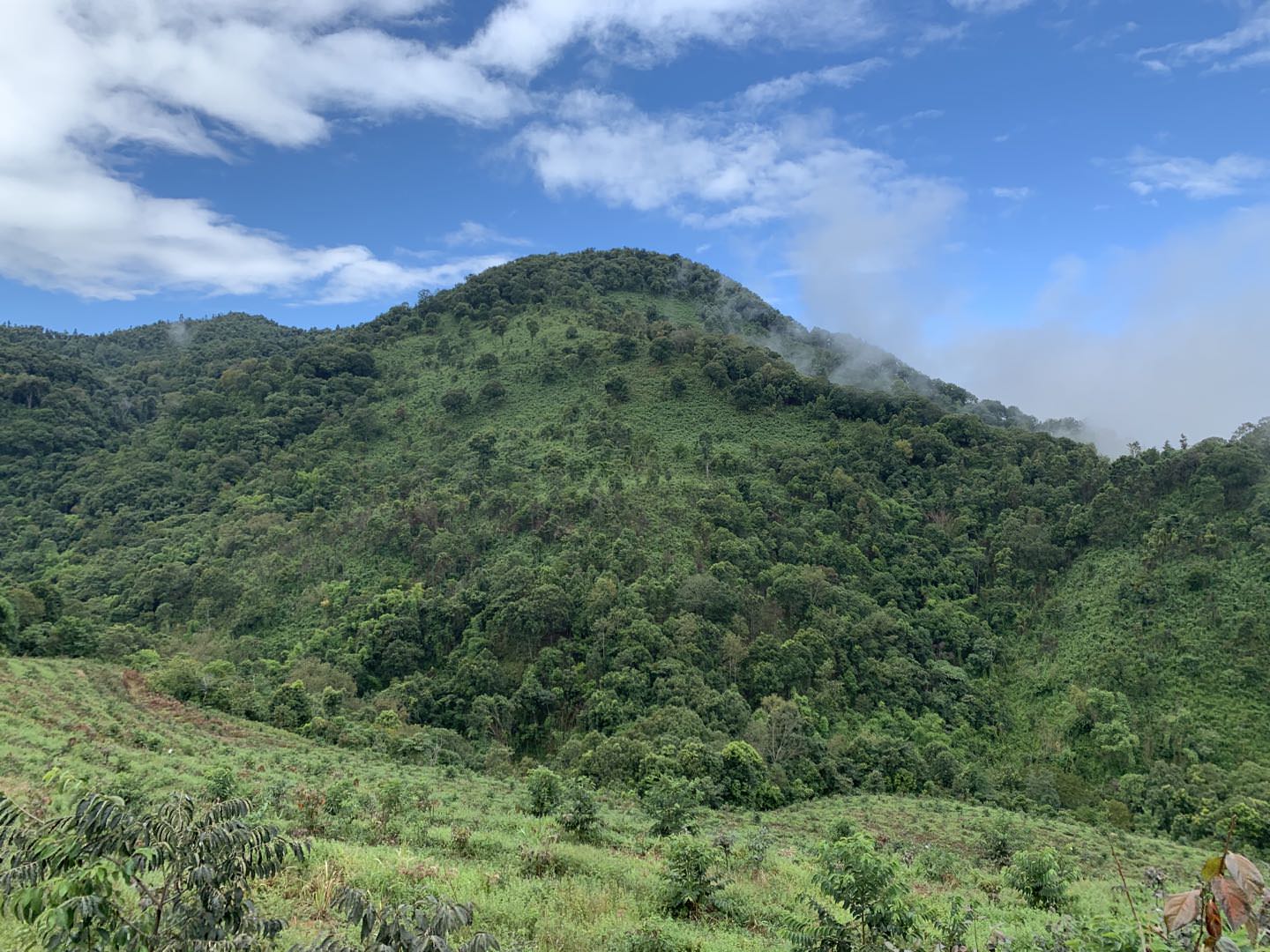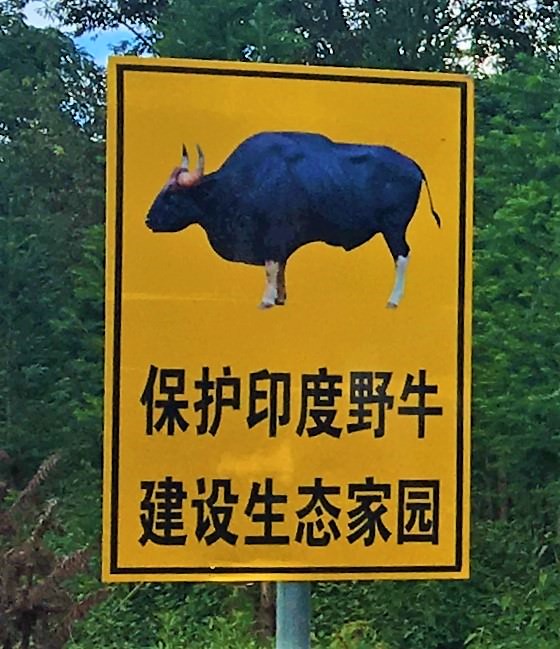Why Yunnan’s Lahu people hunts the Tiger but saves the Gaur?
The Kadoorie Conservation China Department started a new conservation project to protect the Gaur (Bos gaurus) in Xishuangbanna, southern Yunnan. Last time, we introduced this magnificent animal through 10 fun facts. This time round, we will talk about its relationship with the local people.
***

The Gaur, which stands up to 2.2 m at the shoulder and weighs up to a ton, is threatened throughout its range in tropical Asia due to poaching and forest loss.
The ancestors of the Lahu tribe in China were skilled tiger hunters, according to ethnographers. In their language, Lahu means “roasting tiger meat on a fire”. In Thailand, they are called the Muso which means hunter. One did think if the Lahu shows no fear when locking eyes with the jungle’s top predator, they wouldn’t be daunted to take down world’s largest wild cattle – the Gaur.
But to our surprise, the gaur isn’t on the menu of one sub-group of the Lahu tribe in Menghai County, Xishuangbanna in Yunnan. And for this, the area is home to a small population of Gaurs. Due to rampant hunting and forest clearance in the Gaurs’ favourite lowland forest, the species is now so rare that experts estimated that there are only 200 individuals left in Yunnan (Ding et al., 2018). Over in the Gaoligong Mountains in western Yunnan, the Gaur is already locally extinct, and the population in southeastern Tibet has yet to be surveyed (Ding et al., 2018).
As a part of our joint Gaur conservation project in Menghai with local NGO Yunnan Green Environment Development Foundation, we interviewed the Lahu and conducted a rapid biodiversity assessment. Along the way, we found answers as to why the Gaur is in the crosshairs of the Lahu.
.jpg)
Lahu people at a market in Yunnan (Photo credit: Jim Goodman)
Long-held beliefs saved the king of wild oxen
Gaurs are a common sight in one of the local villages. Many locals showed us pictures and videos of the heavy-bodied wild oxen taken by their mobile phones. They said that if you stayed for three days, then you will very likely see them. And true to their word, our team did – one team member even had a close encounter with a bull.
We understand from ethnographic studies on hunting in South East Asia that the game meat from big cats smells unpleasant. Hence, people go after tigers for their bones and hides, but prefer ungulates like Gaur, Sambar Deer and Wild Boar for food.
But why did this village leave the Gaur in peace?
%20(1)%20(1).jpg)
Since its horn is prized as trophy, the meat is valued as wild meat, and some of its internal organs are believed to have medicinal properties, the Gaur is widely poached and illegally traded in Southeast Asia, putting its populations under threat.
Locals told us that they believe that if they hurt the Gaur, it will bring them bad luck and they will be struck by lightning. One villager, who was part of the survey team, told us he holds no ill feelings for a group of gaurs that barged into his newly established four-hectare plantation protected with 1.5-metre-tall barbed wire fences to raid ready-to-harvest corn.
.jpg)
It is interesting that the Gaurs ate only the corn leaves but showed no interest to the ears and stalk.
According to literature, the Lahu people used to worship many gods and deities of the earth, and believes in revenge (karma). Since Mahayana Buddhism was introduced into China early in the Qing period (1644-1911), some Lahus have converted to it. Does it have to do something with their decision to leave the Gaur alone?
In Damrong Tayanin’s book “Hunting and Fishing in Kammu Village” based on his study of a remote village in in Northern Laos not far from Xishuangbanna, he wrote: “Some animals, such as elephants, rhinoceros or gaurs, may not be hunted or trapped because their link with their spirit-owner is too strong to be broken. Since exchange with the spirit-owners of such animals is impossible, killing one of those creates an imbalance and threatens the hunter’s household well-being.This is however not the case with dangerous animals such as large felines, who are considered to be related to the evil spirits of those they may have killed”.
Nevertheless, it is interesting to see how such beliefs had contributed to the conservation of some species.
Looking ahead: Can humans and Gaurs maintain their amiable relationship?
The Lahu’s small-scale slash and burn agriculture practice had also coincidentally created a landscape conducive to the needs of the gaur. When their swidden farms become so infertile that they cannot provide a good crop, the farmers abandon the land, move and clear other areas. Such abandoned swidden farms regenerate. Shorter grasses colonise the land first, followed by tall grasses and pioneer tree species like Macaranga. This mosaic of grasslands interspersed with forest provide good foraging ground and hideouts for the Gaur.

A habitat mosaic of grassland and forest
While some land is reclaimed by nature for the benefit of the Gaurs, the expansion of large-scale commercial farms in this area is threatening the wild oxen’s future.
Two large commercial farms – a 1,000ha persimmon farm and a 1,300ha orange farm – are in the heart of the favourite habitat of the Gaur in Menghai. The persimmon farm uses a lot of herbicide to suppress the grasses. The orange farm manually cut weeds and new shoots attract the Gaur, but they use insecticide on the orange trees. Gaur may eat and drink pesticide-contaminated grasses and water. Some claim that the Gaur is intelligent enough to tell clean from polluted food, but this view should be taken with a grain of salt.
Despite the fact the Gaur would accidentally bulldoze crop trees upon entering orchards, the investors are unfazed and the area will attract more agriculture development. That’s because the return from agriculture farm investment is lucrative. But this is bad news to the resident Gaurs since they would lose substantial prime habitat. (Note: Governmental compensation is RMB 25 per orange tree, while the investment in an orange tree runs up to RMB 600.)

The young reshoots from the cut grass in the orange farm attracts the Gaur.
That’s why we are striving to instill wildlife conservation concepts in the local community in hopes that the Gaur will continue to grace Yunnan’s forests, and that they and humans continue to be good neighbours to one another.

A signage to promote Gaur conservation erected by our collaborative project

